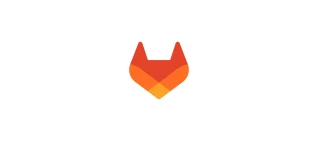At GitLab, we do everything using, well, GitLab. Using our product as part of our workflow allows us to experience, firsthand, the limitations and frustrations that may prevent our users (and us) from being able to get work done quickly and efficiently. In the user experience (UX) department, we've found ourselves struggling with some important aspects of our day-to-day work – this is what we've found, and how we hope to address it:
Design discussions quickly become hard to follow
Design discussion happens inside of issues at GitLab. Typically, a designer will post a wireframe, mockup, or prototype within a comment on an issue to elicit feedback from others. The transparency is excellent: product managers, engineers, and designers can all come together to talk over the problem and the possible solutions. Problems creep in when conversations get too lengthy, hard to follow, and involve multiple iterations of a design. How can we make design discussion at GitLab more useful and accessible?
We need version control for design files
We use Sketch for our day-to-day design work. The UX department's Sketch files live within a design repository to ensure that all designers have access to current patterns and solutions. However these files are not version controlled within the repository, so designers keep personal folders for work-in-progress designs. How can we version control our files within GitLab and eliminate the need to keep multiple versions of a particular design?
A competitive analysis of design platforms and applications
To start looking for solutions to these problems, we conducted a competitive analysis of the other platforms and applications out there tackling design creation, collaboration, and handoff. We wanted to know: What are other design teams doing to address these problems? Are there existing aspects of GitLab we can leverage to solve these problems? If not, what would an MVC look like to integrate designers more efficiently into GitLab?
Summary of findings
Today's average user is tech savvy, with high expectations for interface usability. Products must be useful and easy to use for users with a wide range of backgrounds, experiences, and expectations. As a result, enterprise-level companies have invested heavily in building UX teams to produce beneficial experiences. These UX teams have distinct requirements for the toolsets they use. Design tools must be able to:
- Improve UX consistency
- Enable research and testing of designs with users
- Clarify requirements
- Facilitate collaboration between teams (Engineering, PM, UX)
- Version control design files
- Minimize duplication of work with an SSOT
- Minimize context switching
The last requirement, minimize context switching, really stood out. Enterprise designers work on a variety of platforms. The market has exploded over the past decade, with a majority of designers moving from using desktop software to cloud-based platforms. Designers want and need a single-platform approach. They must have the ability to design, collaborate, and share their work with the rest of the organization within one platform.
This single-platform approach presents a unique opportunity for us. GitLab is the first single application built from the ground up for all stages of the DevOps lifecycle for Product, Development, QA, Security, and Operations teams to work concurrently on the same project. A significant missing piece of this lifecycle is UX design.
Areas of opportunity for GitLab:
- Review and collaboration
- Interaction design
- Version control
- Developer handoff
- Design system management
The total market potential is over US $4 billion and growing. With no clear winners in the design tool space, there is a significant opportunity for an application that can successfully engage developers and design teams in the DevOps lifecycle.
You can view the complete competitive analysis here.
What's next?
A logical place to start is by improving discussion within issues. Design proposals are available in issue descriptions, shared and discussed in comments, and it's not always clear which is the latest version. While we have the option to mark and comment on specific image spots in the blob view and merge requests, the actual design collaboration happens much earlier in the process.
One idea is to make design artifacts a first-class citizen by linking to design assets in the side navigation of an issue. We could allow for commenting on images and propagate these comments in the sidebar for focused and cohesive discussion.
We want to know what you think! You can take a look at and comment on the design artifacts discovery issue here.
Photo by Startup Stock Photos on Pexels.


